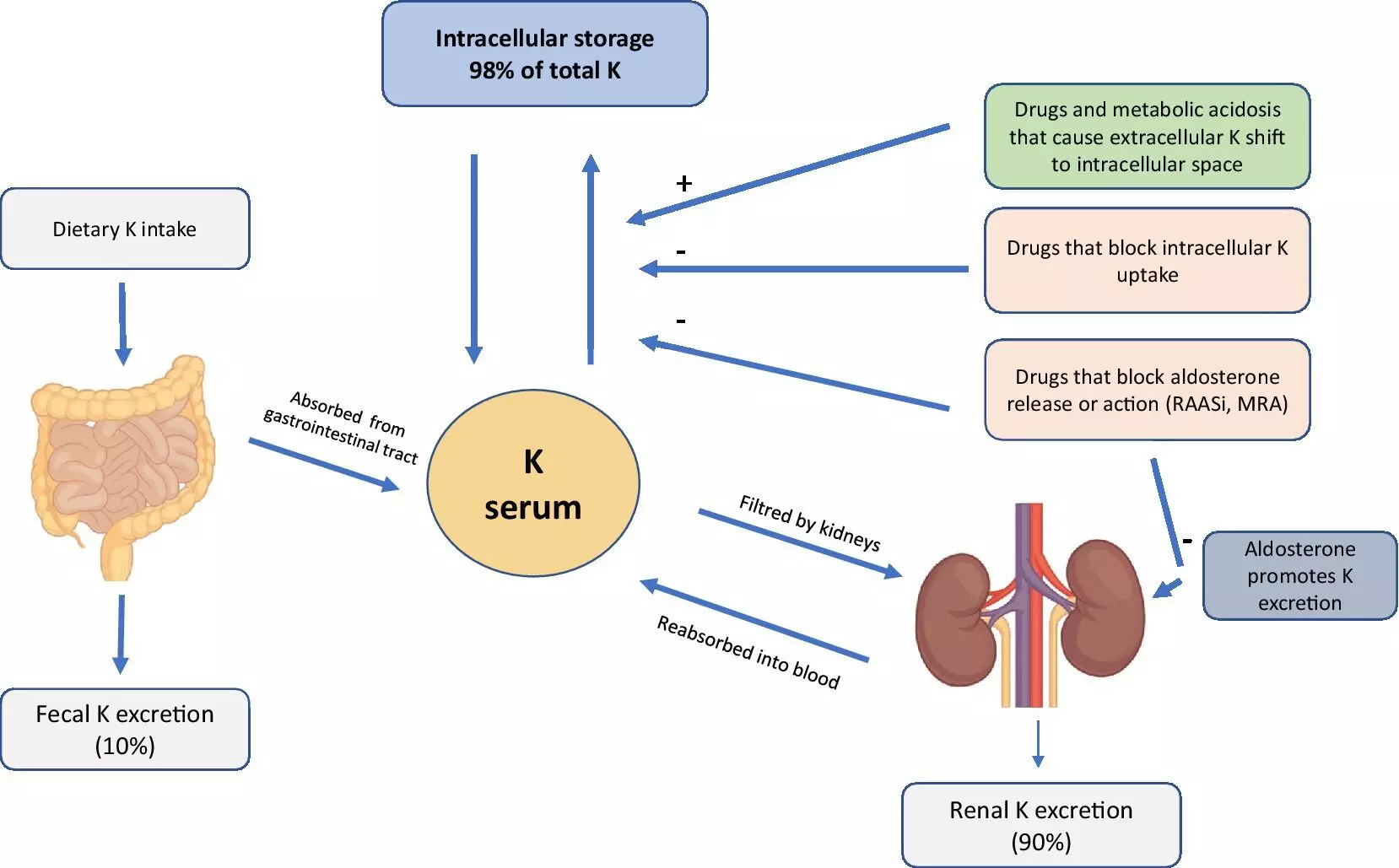SGLT2 Inhibitors Linked to Lower Hyperkalemia Risk and Improved RAASi Continuation suggests new study

SGLT2 Inhibitors Linked to Lower Hyperkalemia Risk and Improved RAASi Continuation suggests a new study published in the JAMA .
Hyperkalemia is a common complication of taking a renin-angiotensin-aldosterone system inhibitor (RAASi). Post hoc analyses of large randomized clinical trials suggested that the addition of sodium-glucose cotransporter 2 inhibitors (SGLT2i) may attenuate this risk. It is unknown if this observation extends to daily clinical practice.
A study was done to evaluate the association between SGLT2i initiation and hyperkalemia in individuals receiving RAASi with a background of diabetes, heart failure, or chronic kidney disease. This population-based retrospective cohort study was conducted in Ontario, Canada, from July 1, 2015, to June 30, 2021.
The cohort comprised adults 66 years and older who were prescribed a RAASi and had a history of diabetes or heart failure, an estimated glomerular filtration rate of less than 45 mL/min/1.73 m2, and/or a urine albumin to creatinine ratio of greater than 30 mg/mmol. The data were analyzed between March 28, 2023, and March 22, 2024. The study exposure was a new prescription of an SGLT2i compared to noninitiation of an SGLT2i. Inverse probability of treatment weighting by a propensity score for the receipt of SGLT2i was used to achieve balance of baseline covariates in both exposure groups. The primary study outcome was hyperkalemia, defined as a serum potassium of greater than 5.5 mEq/L or an administrative code for an inpatient or outpatient encounter with hyperkalemia within 1 year of the index date.
Results A total of 20 063 individuals who initiated an SGLT2i (mean [SD] age, 76.9 [6.6] years; 12 020 [59.9%] male) were compared to a pseudopopulation of 19 781 nonusers (mean [SD] age, 76.8 [7.0] years; 11 731 [59.3%] male). In the overall cohort, 95% had diabetes, 17% had heart failure, and 32% had stage 3 to 5 chronic kidney disease. SGLT2i initiation was associated with a lower risk of hyperkalemia (hazard ratio, 0.89 [95% CI, 0.82-0.96]). SGLT2i users had a significantly lower rate of RAASi discontinuation compared to nonusers (36% vs 45%; P < .001).
This cohort study demonstrated that, among individuals with diabetes, heart failure, or chronic kidney disease who were receiving a RAASi, SGLT2i initiation was associated with a lower risk of hyperkalemia and RAASi discontinuation.
Reference:
Wing S, Ray JG, Yau K, et al. SGLT2 Inhibitors and Risk for Hyperkalemia Among Individuals Receiving RAAS Inhibitors. JAMA Intern Med. Published online April 28, 2025. doi:10.1001/jamainternmed.2025.0686
